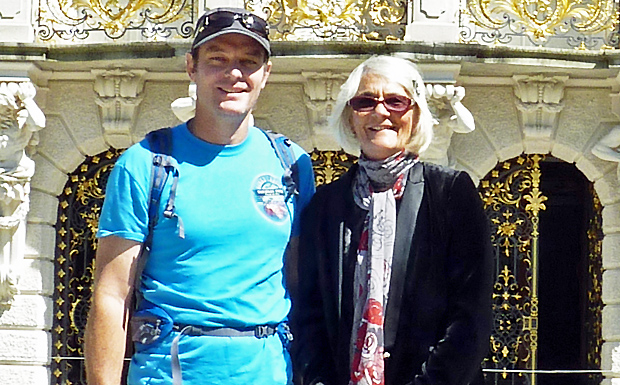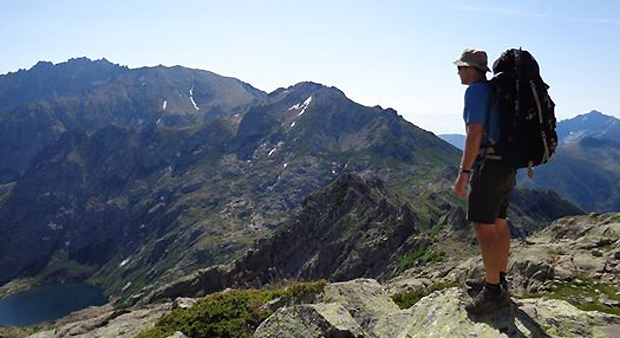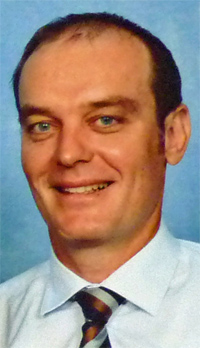
November 17, 2014
It’s a long way from growing up on a dairy farm at Nanango to helping to fight Ebola in Liberia, but Dr Matt Caffery, 37, didn’t hesitate when he was given the chance.
While most people have scratched West Africa off their travel plans, Matt was keen to see if he could lend a hand so he approached the Save The Children Fund.
After some quick training in London, Matt landed in Liberia on October 28 for an eight-week “tour of duty”.
After that it is compulsory that he returns to London.
Matt is working as a GP for Save the Children’s national and international staff, looking after about 200 people.
He has played down the risk of him contracting the deadly disease in emails back to relatives.
“I am not involved in regular, day-to-day treatment of Ebola patients as is occurring in the treatment centres. Of course, the possibility of Ebola will have to be considered in some of my patients, and they will be screened beforehand,” he wrote back home.
“If there is a suspicion, then they will be treated via a different medical pathway not involving me. I am emphasising this as while there is never a 100 per cent guarantee that I won’t be in proximity to an Ebola case, the likelihood is very low.”
He is full of praise for the organisation that he’s working for.
“Save the Children has a wonderful history of working in these locations but not in an acute disaster medical provider role. So they are having to develop a lot of new protocols, strategies, etc and I will possibly be part of that.
“But I can say they are a professional organisation, are throwing everything at this and have staff health as an utmost priority.
“Regarding evacuating patients with either confirmed or potentially developing Ebola, well that is extremely complicated, difficult to give a succinct answer and not entirely up to individual NGOs to decide depending on various political decisions.
“I am comfortable with what is in place and my own risk profile. As stated before, I am going to be spending a lot of time reassuring others.”
- External link: Donate to the Save The Children Fund’s Ebola Relief Fund

* * *
Matt is the youngest son of well-known Nanango couple Bill and Liz Caffery.
He attended St Patrick’s Catholic School in Nanango and then won a scholarship to complete his secondary education at Marist College at Ashgrove.
He completed an Honours degree in Environmental Science at the University of Queensland before deciding he really wanted to be a doctor. He studied medicine at Flinders University in Adelaide.
After graduating, Matt worked in hospitals in North Queensland where he developed an interest in tropical medicine. He completed a post-graduate course at Liverpool in the UK several years ago.
“Matt has always had a humanitarian interest in helping people,” his proud mum Liz said.
“In recent months he has been travelling in Europe and from there to North Africa where he made his decision to join up with the Save the Children Fund.
“He has the full support of Bill and I and we are very proud of his generous and noble decision to work in an Ebola crisis area.
“We are aware of the risk he is taking, so we pray for his safety but more so for an appropriate global response, including Australia, to this dreadful problem.”
* * *
In Liberia … In Matt’s Own Words

October 28
“Arrived in early hours of morning. The airport is quite away from Monrovia so after a few delays got to hotel around 0400. Otherwise heading to office etc shortly to get a briefing.”
November 2
“Am now in a place called Kataka, Margibi province after travelling here yesterday from Monrovia. We are about one and a half hours from Monrovia. The reason for being here is the expected increased number of staff in this region once Save the Children begins opening its Community Care Centres (these are to be a smaller version of the Ebola Treatment Units and run with more community involvement).
Most of my time since being here has been spent on reading and beginning to put in place protocols for all sorts of things such as potential Ebola-affected staff members, medical evacuations, first aid kits, finding out which hospitals have what services, etc. So mostly sitting in the office or in meetings.
As you would expect it is a tropical country and thus rains a lot. However, the dry season normally starts around now. Nearby here is a massive rubber plantation run by Firestone. I think it employs around 6500 people.
(We) have had a few incidents near both offices over the past couple of days. One involved a man who may or may not have had Ebola being found on the street moribund outside the office in Monrovia.
Nobody touches anybody here now, so effectively we locked the office down and I did a very non-physical assessment from across the street.
Despite calling an ambulance, it took a very, very long time before he was eventually retrieved. It showed that everything doesn’t always go as planned. After that I cannot say where he went.
Yesterday, a young man either fainted or had a seizure, again on the street outside the office here. At least he made a full recovery and was fine afterwards. The poor guy was coming here to apply for a job, and thinks he won’t get one now because of his collapse.
People are working really hard, but it takes an incredible amount of time and planning to put things in place. I know everyone always focusses on doctors and nurses for these types of disasters but they are only the tip of the iceberg.
Logisticians, engineers, architects, media and communications, health programming, transport, etc are all involved. As well, all these people are not in any way effectively exposed to Ebola patients.
Perhaps the Australian Government should explore sending these people as they are all needed rather than focussing on the worst-case scenarios.”
November 16
“Last week was a hectic week for a lot of the other staff. They are opening the community care centre today to patients.
It’s a new concept and there is understandably some trepidation as to how it will go. The biggest concern is transmission of the virus either to our staff (nearly all our front-line staff are Liberian nationals) or transmission within the centre amongst individuals if they don’t follow the correct procedures.
Save the Children is currently working on a second community care centre, to open in about a week. After that they will reassess the demand for centres and geographical location of new cases.
Overall, people are cautious about the decline in new case numbers but hopeful. Reporting systems have been very inaccurate and sharing and dissemination of data has often been difficult and incomplete. Proxy measures such as number of empty beds in Ebola Treatment Units or number of burials performed by the teams also point towards a decline in cases.
However, the sceptics amongst us always fear that people have decided not to present to ETUs due to fear and stigma and are hiding deaths and burials from the authorities (there was a lot of anger at a decision to cremate bodies in Monrovia as opposed to a traditional burial. While this seems harsh it was found to be difficult to safely bury bodies due to a high water table and bodies not being able to buried deep enough in some areas).
There are still spikes in the daily counts, and fear remains about isolated outbreaks in remote communities are going unnoticed and then restarting a broader outbreak yet again.”
* * *
Matt has become something of a minor media celebrity since he’s been in Liberia. He’s been interviewed by:























